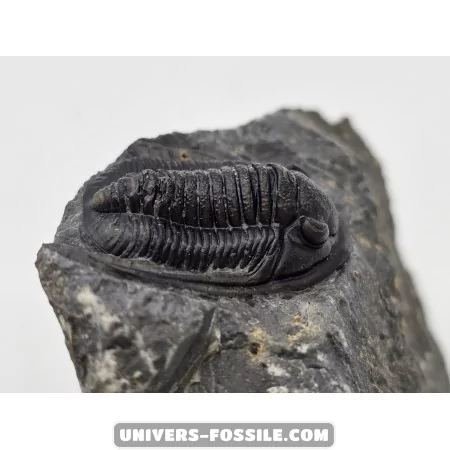Cornuproetus cornutus: Exquisite Trilobite Fossils for Collectors | Trilobites

Cornuproetus cornutus Trilobites
Cornuproetus cornutus was a medium-sized trilobite belonging to the order Proetida. It lived during the Devonian period, approximately 390 to 360 million years ago. This trilobite was characterized by several distinctive features:
- Body: Like all trilobites, Cornuproetus cornutus had a body divided into three lobes: the cephalon (head), thorax (body), and pygidium (tail).
- Shape: The body of Cornuproetus cornutus was oval and slightly flattened, with an outer surface covered in a hard, segmented exoskeleton.
- Eyes: This trilobite possessed large compound eyes, which likely enabled it to detect movement and light in its environment.
- Spines: A distinctive feature of Cornuproetus cornutus was the presence of two pronounced spines extending from its cephalon, giving it a unique and recognizable appearance.
Habitat and Distribution:
Trilobites, including Cornuproetus cornutus, were marine creatures that inhabited the oceans and seas during ancient times.
Discover the Fascinating World of Cornuproetus cornutus Trilobites
Trilobites, ancient marine creatures that inhabited the Earth during the Devonian period, left behind a rich fossil record that continues to captivate scientists and enthusiasts alike. Among these intriguing arthropods was Cornuproetus cornutus, a species that roamed the ancient seas, leaving a lasting impression on the geological history of our planet.
Lifestyle Insights
Our understanding of the lifestyle of Cornuproetus cornutus is pieced together from fossil analyses and observations of related species. Believed to be a benthic predator, this trilobite likely scavenged the seafloor for small marine organisms using its specialized mouthparts, offering a glimpse into its prehistoric feeding habits.
Journey to Extinction
Trilobites, including Cornuproetus cornutus, thrived for millions of years before meeting their demise around 252 million years ago during the Permian-Triassic extinction event. The reasons behind their extinction remain a topic of debate among experts, with factors such as environmental upheavals and volcanic eruptions playing possible roles in their eventual disappearance from the planet.
Unraveling Fossil Significance
The fossils of trilobites like Cornuproetus cornutus serve as windows into the past, offering valuable insights into ancient biodiversity, arthropod evolution, and the diverse marine ecosystems that once covered the globe. Paleontologists continue to study these remarkable creatures to piece together the puzzle of Earth's distant history.
Cornuproetus cornutus: Exquisite Trilobite Fossils for Collectors
Explore the world of Cornuproetus cornutus, a captivating species of trilobite that offers a window into ancient marine life. These remarkable fossils are not only beautiful but also hold significant scientific value.
Belonging to the Devonian period, Cornuproetus cornutus thrived in diverse marine ecosystems, leaving behind a legacy that continues to intrigue researchers and enthusiasts alike.
With its unique features and intricate details, the Cornuproetus cornutus is a prized addition to any fossil collection. Whether you're a seasoned collector or a budding enthusiast, these trilobite fossils are sure to spark curiosity and admiration.
Their fossils are also highly prized by collectors and fossil enthusiasts.
In conclusion, Cornuproetus cornutus is a fascinating species of trilobite that bears witness to the richness and diversity of ancient marine life. Its distinctive appearance and role in the Devonian marine ecosystems make it a subject of interest for scientists and fossil enthusiasts worldwide.
